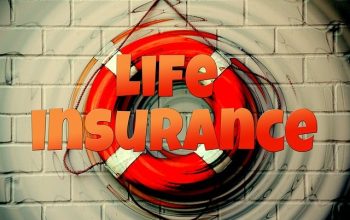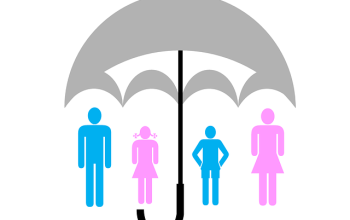The article underscores the necessity for businesses with employees to have Employer’s Liability Insurance to fulfill legal obligations and protect against financial loss from employee workplace injuries or occupational diseases. This insurance is distinct from General Liability Insurance, which is essential for safeguarding against third-party claims involving bodily injury or property damage. Additionally, Professional Liability Insurance, also known as Errors and Omissions (E&O) insurance, is critical for businesses providing professional services to protect against allegations of negligence or errors. For companies with public interaction, Business Liability Coverage, which includes Public Liability Insurance, is crucial to protect against customer injuries or property damage, while Product Liability Insurance specifically addresses claims related to product defects or malfunctions. Small businesses must integrate these liability insurances, including Small Business Insurance, into their risk management strategy to ensure both employee and customer safety, as well as to secure financial stability and operational continuity in the face of unforeseen incidents. Understanding the roles of General Liability, Professional Liability, Business Liability Coverage, Public Liability, and Product Liability within Commercial Liability Insurance is key for small business owners to maintain a robust risk management framework and protect against various legal claims. As businesses grow, they must regularly review and adjust their insurance coverage to match the changing exposure profile and ensure operational resilience in a dynamic business landscape.
Employer’s Liability Insurance stands as a pivotal safeguard for businesses with workforce membership. Mandatory across many sectors, this insurance serves as a financial barrier against employee injury or illness claims arising from work duties. It is an indispensable tool in maintaining the fiscal integrity of a company. This article delves into the critical role of Employer’s Liability Insurance within the broader context of Business Liability Coverage, which encompasses General Liability Insurance, Professional Liability Insurance, and Public Liability Insurance. It also examines how Small Business Insurance and Product Liability Insurance intersect with Commercial Liability Insurance to form a comprehensive risk management strategy for businesses of all sizes. Understanding these distinctions is key to securing the right coverage and ensuring operational continuity in the face of unforeseen events.
- Navigating Mandatory Employer’s Liability Insurance: A Critical Shield for Businesses with Staff
- Comprehensive Overview of Business Liability Coverage Types and Their Distinctions from Employer’s Liability Insurance
- Strategic Integration of Employer’s Liability Insurance in Risk Management for Small Businesses and Beyond
Navigating Mandatory Employer’s Liability Insurance: A Critical Shield for Businesses with Staff
Navigating the requirements for Employer’s Liability Insurance is a critical step for businesses with staff, as it ensures compliance with legal obligations and financial protection against work-related injuries or illnesses. This type of insurance is mandatory and serves as a safeguard by providing coverage for claims made by employees who sustain workplace-related harm or contract occupational diseases. It is distinct from General Liability Insurance, which covers third-party claims, but equally important for businesses to consider.
Furthermore, Professional Liability Insurance, also known as Errors and Omissions Insurance, offers protection for businesses that provide professional advice or services, safeguarding against claims of negligence or mistakes in one’s work. For companies with products or services interacting with the public, Business Liability Coverage, which includes Public Liability Insurance, is essential to mitigate risks associated with customer injuries or property damage. Product Liability Insurance, a subset of this broader category, specifically addresses claims arising from product defects or malfunctions.
Small businesses must not underestimate the value of Commercial Liability Insurance in their risk management strategy. It encapsulates a comprehensive approach to liability coverage, addressing both the well-being of employees and the protection of customers and third parties. By understanding and securing the appropriate liability insurance, small businesses can operate with greater confidence, knowing that they are equipped to handle unforeseen events that could otherwise jeopardize their financial stability and operational continuity.
Comprehensive Overview of Business Liability Coverage Types and Their Distinctions from Employer’s Liability Insurance
businesses with employees must navigate a complex array of liability risks that can arise from their operations. Among the various types of business liability coverage, Employer’s Liability Insurance stands apart in its specific focus on protecting against claims made by employees for injuries or illnesses sustained during the course of their work. This distinct form of coverage is mandatory in many jurisdictions and is crucial for businesses to maintain financial stability in the face of such claims.
Distinct from Employer’s Liability Insurance, General Liability Insurance is a broader form of protection that covers third-party claims, such as bodily injury or property damage resulting from a business’s operations. It is particularly relevant for small businesses that interact with customers and the public. Professional Liability Insurance, also known as Errors and Omissions (E&O) insurance, safeguards against claims of negligence or harm due to professional advice or services provided. Another significant coverage type is Public Liability Insurance, which provides protection when a business interacts with the public, covering claims related to public property damage or bodily injury. Product Liability Insurance is specifically tailored for businesses that produce or sell products, offering coverage against claims of product defects or harm caused by these products. Lastly, Commercial Liability Insurance can be tailored to meet the unique liability needs of a business, often combining elements of General Liability with additional coverages relevant to the specific industry. It’s important for businesses to understand these different types of insurance and how they complement each other to provide comprehensive protection against various liability exposures. Each type of business liability coverage serves a unique purpose, and in combination, they form a robust shield against potential financial losses due to legal claims. Understanding these distinctions ensures that businesses can make informed decisions about the types and levels of coverage necessary for their operations and risk profile.
Strategic Integration of Employer’s Liability Insurance in Risk Management for Small Businesses and Beyond
Integrating Employer’s Liability Insurance into the risk management strategy of a small business is a prudent step that extends beyond mere compliance with legal requirements. This insurance serves as a critical financial buffer, protecting against the costs associated with work-related injuries or illnesses among employees. It’s not merely about having General Liability Insurance, Professional Liability Insurance, or Business Liability Coverage; it’s about safeguarding the lifeblood of the company—its financial stability. For small businesses, the implications of an employee claim can be particularly acute, potentially disrupting operations and straining resources. Employer’s Liability Insurance ensures that even in the face of such claims, the business can navigate legal complexities without undue financial hardship.
Beyond the immediate scope of protecting against employee-related liabilities, a comprehensive risk management strategy for small businesses should also consider Public Liability Insurance and Product Liability Insurance as part of Commercial Liability Insurance offerings. These types of coverage shield businesses from claims resulting from third-party injuries or damages, and from potential product-related issues that could arise even after the sale or service delivery. Incorporating these into a risk management framework not only demonstrates a commitment to the well-being of employees and customers but also positions the business to withstand unforeseen events. As businesses grow, the scope and complexity of liability risks evolve, making it imperative to review and adjust coverage to match the expanding exposure profile. A tailored approach that includes Employer’s Liability Insurance as part of a broader portfolio of insurance products is essential for small businesses aiming to protect their assets and maintain operational continuity in an unpredictable business landscape.
In conclusion, businesses with employees are legally obligated to secure Employer’s Liability Insurance, a critical safeguard against the financial repercussions of work-related injuries or illnesses. This insurance is a cornerstone in a comprehensive risk management strategy, complementing other forms of business liability coverage such as General Liability Insurance, Professional Liability Insurance, Public Liability Insurance, and Product Liability Insurance under the umbrella of Commercial Liability Insurance. For small businesses, integrating Employer’s Liability Insurance is not just a legal necessity but also a prudent step to ensure long-term sustainability and protect against the unpredictable nature of workplace incidents. As a final note, understanding the nuances between these liability coverages is crucial for any business aiming to navigate the complex landscape of business insurance effectively.



